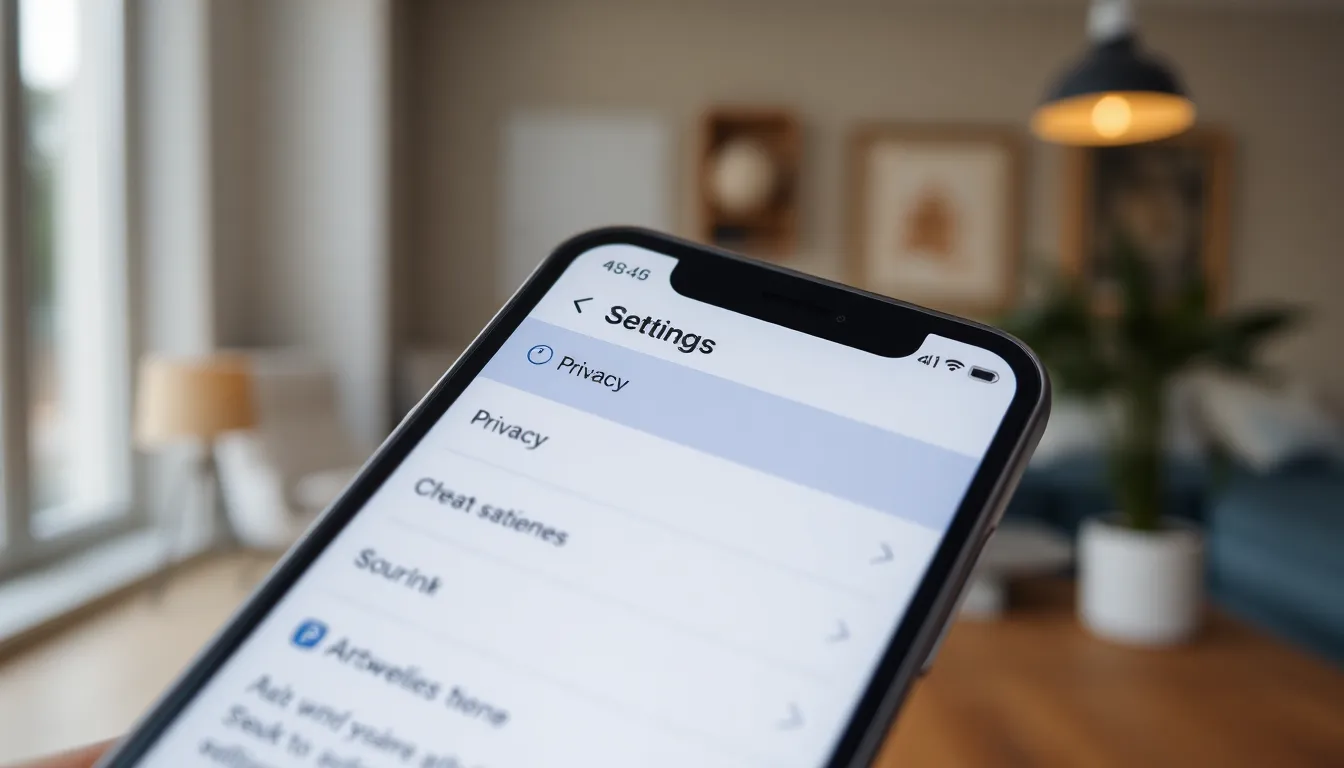In a world where privacy feels like a luxury, sharing your name with every app on your iPhone might seem like a bad joke. Picture this: you’re at a coffee shop, trying to enjoy your latte, when your phone decides to announce your name to the universe. Not cool, right? Thankfully, turning off name sharing on your iPhone is easier than finding the perfect avocado in a grocery store.
Table of Contents
ToggleUnderstanding Name Sharing on iPhone
Name sharing on iPhone refers to the feature that allows apps to broadcast a user’s name to others nearby. This feature can create uncomfortable situations when personal information is revealed in public settings.
What Is Name Sharing?
Name sharing lets apps access and communicate a user’s name to nearby devices. Apps like AirDrop and contact sharing tools utilize this functionality to enhance connectivity and interaction among users. Although convenient, many individuals prefer to keep their name private, avoiding unexpected revelations in social contexts. Some users may not realize this feature is active, leading to unintended disclosures.
Why You Might Want to Turn It Off
Turning off name sharing provides greater control over personal information. Privacy concerns often arise when a user’s name is publicly broadcasted, especially in crowded places like cafes or events. Disable this option to maintain a low profile and prevent unsolicited attention. Protecting one’s identity fosters a more secure experience while using various apps and features on the device. Keeping personal details confidential is essential in today’s digital landscape.
Step-by-Step Guide on How to Turn Off Name Sharing on iPhone

This section outlines the process to turn off name sharing on an iPhone. By following these steps, individuals can enhance their privacy and control over personal information.
Accessing the Settings App
Begin by locating the Settings app on the iPhone’s home screen. Tapping on the icon opens a menu with various options. Users should look for the option that allows them to customize their device settings. The Settings app provides access to essential features, enabling users to manage their privacy preferences effectively.
Navigating to Privacy Settings
Once inside the Settings app, scroll down to find the Privacy section. This section houses critical privacy-related settings that affect how personal information is shared. Users can tap Privacy to reveal additional options related to location services, contacts, and more. Focusing on privacy settings promotes a personalized experience while using the iPhone.
Disabling Name Sharing
Within the Privacy menu, locate the option for name sharing, often labeled as Sharing Name or similar. Tapping this option presents a toggle switch. Users can switch it off to disable name sharing immediately. This simple action prevents apps from broadcasting their names to nearby devices, ensuring a more private usage experience.
Troubleshooting Common Issues
Turning off name sharing on an iPhone can sometimes present challenges. Users might find that the option isn’t responding as expected.
What to Do If Name Sharing Won’t Turn Off
If name sharing won’t turn off, try restarting the device. A simple reboot often resolves minor software glitches. Opening the Settings app again might help to refresh the adjustments made earlier. Checking for any relevant prompts or error messages could also provide insights into the issue. If the problem persists, consider resetting the network settings. Navigate to Settings, then General, and select Reset. This step clears any saved networks, which can remove conflicts affecting settings.
Checking for Software Updates
Regular software updates can solve many iPhone issues, including problems with name sharing. Accessing Settings and scrolling to General reveals the Software Update option. It’s essential to check for available updates frequently. Running outdated software might limit functionality or cause bugs. If an update is available, download and install it. Completing this process often enhances the overall performance and stability of iPhone settings.
Benefits of Turning Off Name Sharing
Turning off name sharing on an iPhone offers various advantages that enhance user experience. Individuals can enjoy increased control over their personal information and interactions.
Enhanced Privacy
Increased privacy ensures that personal details, such as names, remain confidential. Users gain peace of mind knowing that their identity isn’t exposed to nearby devices. Protecting personal data minimizes the risk of being targeted by unsolicited queries. Disabling this feature allows users to interact with apps without revealing their identities. They can engage with technology confidently, minimizing unwanted digital footprints. Enhanced privacy aligns with broader trends of prioritizing personal data security.
Preventing Unwanted Interactions
Preventing unwanted interactions becomes simpler when name sharing is disabled. Users often experience discomfort from unexpected attention in public spaces. By turning off name sharing, individuals can avoid intrusive conversations initiated by strangers. Protection against unsolicited requests enhances social comfort, especially in environments like cafes or airports. Choosing privacy creates a more controlled environment for interactions. Users can focus on their own activities without worrying about being approached unexpectedly. Reducing unwanted interactions leads to a more enjoyable digital experience.
Turning off name sharing on an iPhone is a simple yet effective way to enhance personal privacy. By following the straightforward steps outlined in the article, users can take control of their information and minimize unwanted attention in public spaces. This small adjustment not only fosters a more secure experience but also allows individuals to navigate the digital landscape with confidence. Regularly checking device settings and keeping software up to date further ensures optimal performance and privacy protection. Embracing these practices can lead to a more enjoyable and worry-free interaction with technology.
